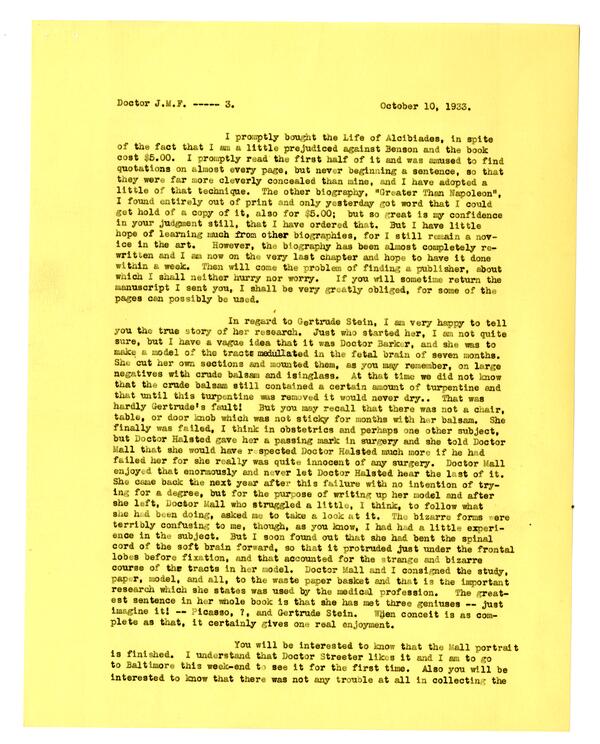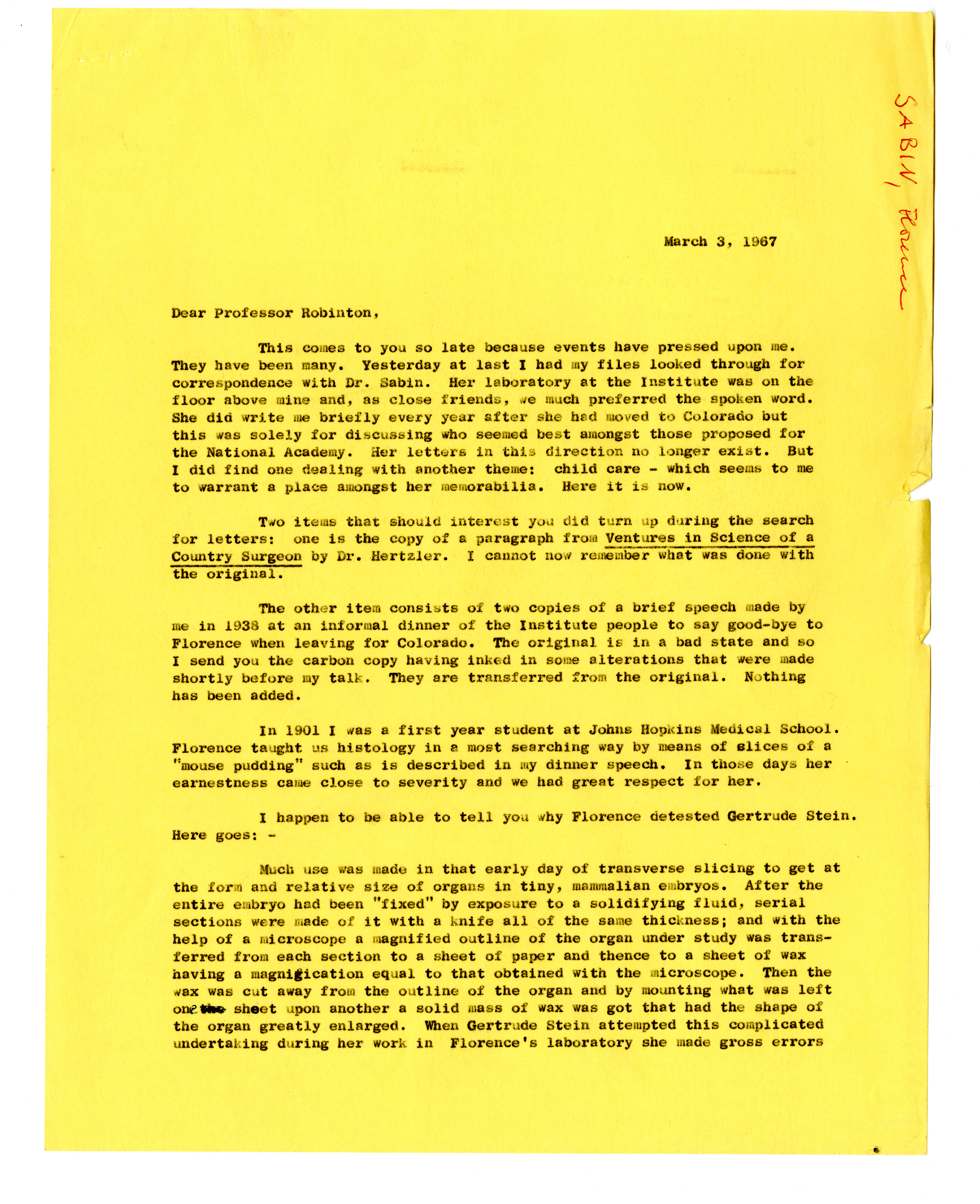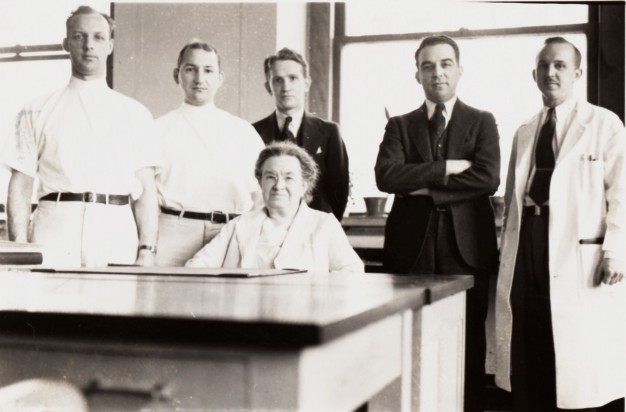Florence Sabin and Gertrude Stein: Who Counts as a Scientist?
The Center for Digital Scholarship’s project Visualizing Women in Science highlights forgotten women scientists in the collections of the American Philosophical Society. In making this project, we have often had to contend with the thorny question of who qualifies as a scientist. While the collections contain numerous biologists, chemists, physicists, and pathologists, we also find references to nurses and home economists. We find correspondence with lab technicians who helped conduct experiments, secretaries who procured research supplies, and librarians who helped prepare research articles. Are these people scientists? And if so, how do we contextualize their contributions next to much more famous scientists?
One particularly interesting connection we came across concerned modernist author Gertrude Stein. Before she became a writer, Stein attended Johns Hopkins Medical School. She was in the same class as Florence Sabin, whose papers the APS holds. Sabin was a remarkably talented student who successfully produced a model of the brain during her years in medical school. Only a year after graduation, Sabin turned this work into her textbook An Atlas of the Medulla and Midbrain (1901), which remained a key reference work for years.
Stein, on the other hand, started as a devoted student, but her attention wavered during her final year. Stein failed to pass enough of her classes to graduate. As a final offer to help her over the finish line, she was offered the chance to graduate if she could make a model of the fetal brain. As Sabin was now a faculty member at Hopkins, having graduated the year before, she was called to help evaluate the model.

As Sabin recalled in a letter to Joseph Marshall Flint, a fellow medical researcher who attended Hopkins with Sabin, Stein prepared her model using crude balsam and isinglass. As the crude balsam contained trace amounts of turpentine, it never became fully dry, which meant that “there was not a chair, table or door knob which was not sticky for months with her [Stein’s] balsam.” Stein dutifully produced the model and stayed on an additional year to write up her findings, but the fatal flaw in its construction rendered the whole model useless. In the end, Sabin and her mentor Franklin Mall threw the work in the garbage.

The papers of Peyton Rous also shed light on the relationship between Sabin and Stein. There, Rous relates his memories of Sabin’s opinion of Stein. According to him, Stein had insufficient mechanical skill and therefore produced a model of no scientific value; however, in her book The Autobiography of Alice B. Toklas, she held this up as a great scientific triumph. Sabin could never get past this contradiction and would “seethe when Gertrude Stein was mentioned.”
While Stein clearly had serious shortcomings as a student of medicine, we still include her in our project. Her engagements with science clearly left an indelible mark in Florence Sabin’s mind, and her presence in Sabin’s network of personal connections shows another, humorous side to the often serious practice of science. The correspondence concerning Stein has been digitized and will be available to scholars of medicine, science, and literature in the Digital Library.

